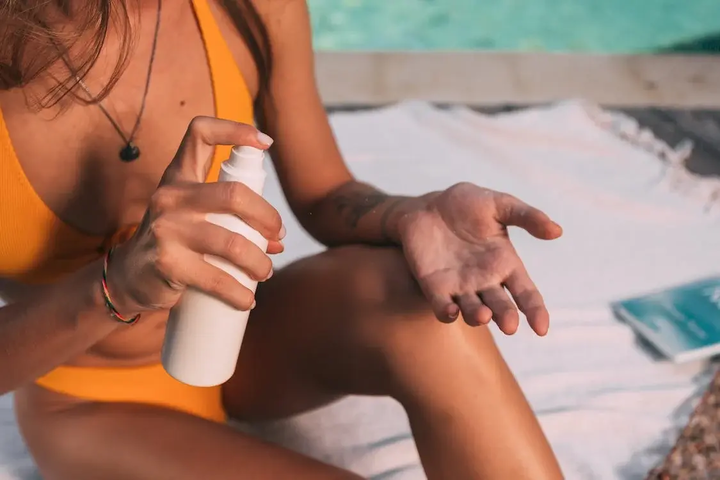As Summer comes to a close, the days of effortlessly achieving a natural and sun-kissed glow just from stepping outside or going to the beach are over. This contributes to a growing interest in tanning alternatives, such as spray tans, tanning beds, and self tanner. It’s no secret that tanning from UV rays is bad for you (especially without the proper use of sunscreen!) and can indeed increase your risk for skin cancer. However, when it comes to these tanning alternatives, many misconceptions have arised about their potential health risks. This article is here to debunk these myths, separate fact from fiction, and provide you with accurate and helpful information that will still allow you to achieve that sun-kissed glow safely and responsibly.
What is the Difference Between the Tanning Alternatives?
It is widely acknowledged that tanning beds are the absolute worst alternative to natural sun tanning. If you weren’t already aware of this, tanning beds emit highly concentrated UV radiation, causing damage to the skin rapidly and increasing one’s risk of skin cancer, premature aging, wrinkles, and other health concerns. So, it’s safe to say… stay away from tanning beds!
Self tanning and spray tans, however, have become increasingly popular alternatives to achieve a quick and natural-looking glow. Spray tanning is the application of a DHA based tanning solution onto your skin by means of a booth or a professional technician. This method produces a temporary tan that does not involve UV exposure, and it can be customized depending on the person!
On the other hand, self tanning relies on at home products that many people purchase from drugstores such as lotions, sprays, or mousses. All of these products contain DHA and do not involve UV exposure.
How Likely Is It That I Get Skin Cancer From Self Tanner or Spray Tanning?
There is currently no conclusive evidence that suggests these products are linked to an increase in skin cancer. The vast majority of people do not experience significant health issues when it comes to self tanning and spray tanning, as these are the safer alternatives to sunbathing and tanning beds. However, it’s important to be aware of the short term and long term health risks that occur if used improperly or too frequently.
What Are the Risks of Using Self Tanner or Spray Tans?
When used correctly, spray tans and self tanner are generally considered safe, but it’s good to be aware of the potential risks associated with using these products.
Many people experience skin irritation, redness, itching, and allergic reactions when using DHA products. Typically, this can be easily addressed by washing it off and discontinuing the use of the product.
In the long term, one potential concern of using these tanning products is in the inhalation of DHA. DHA stands for dihydroxyacetone and it has a chemical reaction with your skin and forms compounds called melanoidins. This replicates the appearance of a bronzed tan. While this may seem like the easiest way to achieve a quick tan, prolonged exposure to DHA inhalation may pose respiratory risks further down the line. In addition, overuse of these tanning products can potentially lead to skin damage, such as excessive dryness, buildup of color, and premature aging.
What Are Ways to Prevent Health Problems Caused By Tanning Alternatives?
There are a few things you can do just to ensure that you won’t have to experience any health problems associated with tanning products.
You can minimize any risk by conducting a patch test before applying the tanner to your entire body. This can help you ensure that you don’t have any crazy allergic reactions to the ingredients in the solution.
Do this by:
- Applying a small amount of tanning solution to a small, clean, and dry area of your skin (typically your wrist).
- Wait a full 24 hours and avoid washing the area or exposing it to water.
- The following day, check for reactions.
- If you have no reaction, you’re good to go! If you notice or feel something off, safe to say you shouldn’t do a full body tan using the product.
If you’re getting your spray tan done in a salon, make sure that the salon has good ventilation! Some salons provide nose plugs or goggles, but if not, make sure that there are fans around so that you don’t inhale the solution.
Always make sure to follow product instructions carefully! Overuse of any of these tanning products is never good (especially for aesthetics). Typically, it’s best to wait a few days to a week before applying. Keep moisturizing your skin, applying sunscreen, and make sure to allow your skin to breathe in between uses!
So Can I Keep Using These Tanning Products?
It’s safe to say that self tanner and spray tans are the safest and most effective way to achieve a natural, sun kissed glow. As long as you take the necessary precautions, you will have nothing to worry about! Make sure to conduct patch tests, follow instructions, and avoid prolonged exposure to the product. Prioritize your safety and make sure to wear sunscreen still. We hope this article made you feel more comfortable and safe getting your tan on!





No Comment